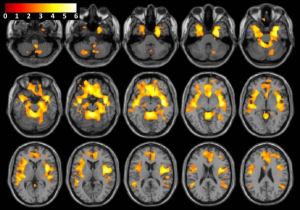
Migraine headaches, or migraines, are defined as an intense throbbing or a pulsing sensation in one area of the head, usually with nausea, vomiting, and sensitivity to light and sound.
Migraines are prevalent globally, as 30% or more people worldwide who struggle with headaches report suffering from migraines.
Although migraines themselves are not lethal (if correctly diagnosed), migraines can cause social and economic burden for the affected the individuals, primarily from lost working hours and reduced productivity. Since people with migraines are sensitive to light, migraines can prevent them doing everyday tasks such as going to school/work and taking care of their family. According to the World Health Organization, about 25 million working- or school-days are lost every year due to migraine in the United Kingdom.
In spite of the prevalence and the social/financial burdens, there is no cure for migraines; affected people are treated for the symptoms to lessen the headache with medication and/or lifestyle modifications.
A recent study published in Brain shows that a narrow band of green light not only exacerbates migraines the least out of all light colors but also reduces the intensity of the headache.
Rami Burstein, John Hedley-Whyte Professor of Anesthesia at Beth Israel Deaconess Medical Center and Harvard Medical School, is the primary author of the study. Burstein echoed how the sensitivity to light can be disabling for the migraine patients.
“More than 80 percent migraine attacks are associated with and exacerbated by light sensitivity, leading many migraine sufferers to seek the comfort of darkness and isolate themselves from work, family, and everyday activities,” Burstein said.
Burstein and his colleagues asked patients with migraines to report any change in the intensity of the headache when they were exposed to different light colors: white, blue, green, amber, and red. They found that green light reduced the headache intensity by at most 15% in about 20% of the patients. On the other hand, all other colors increased the intensity by 15-20%.
The research team delved further into the biological mechanisms, specifically asking what is special about the color green.
The team found that green light, out of all colors, generated the smallest electrical signals in the retina and the cortex of the patients. Retina is an inner layer of the eye that has light-sensitive neurons called rods and cones. Cortex is a part of the brain that has various functions, such as receiving and processing sensory information.
In addition, the team used rats to show that neurons in the thalamus, an area in the brain that relays sensory information from the retina to the cortex, are the least responsive to the green light, leading to the smallest response from the cortex. In a brain going through a migraine, this sort of small response might reduce the intensity of the headache and the sensitivity to the light.
Burstein said he hopes that green light can be utilized to provide relief for migraine patients.
“My hope is that patients will be able to benefit directly from these findings one day very soon,” Burstein said.
Currently, Burstein is trying to develop a low-cost and low-intensity light bulb that emits “pure” green light (narrow wavelength) and sunglasses that block all light colors but the narrow band of the green light. It is unlikely that the bulb and the sunglasses will be available anytime soon, as Burstein estimates the cost of the bulb and the technology to be astronomical.
Related:
Discuss this article in our forum
Tylenol and other paracetamol painkillers may hinder the brain’s error-correction mechanisms
Missing link found between brain and immune system
“Molecules” made of light may be possible, say physicists


















Comments are closed.